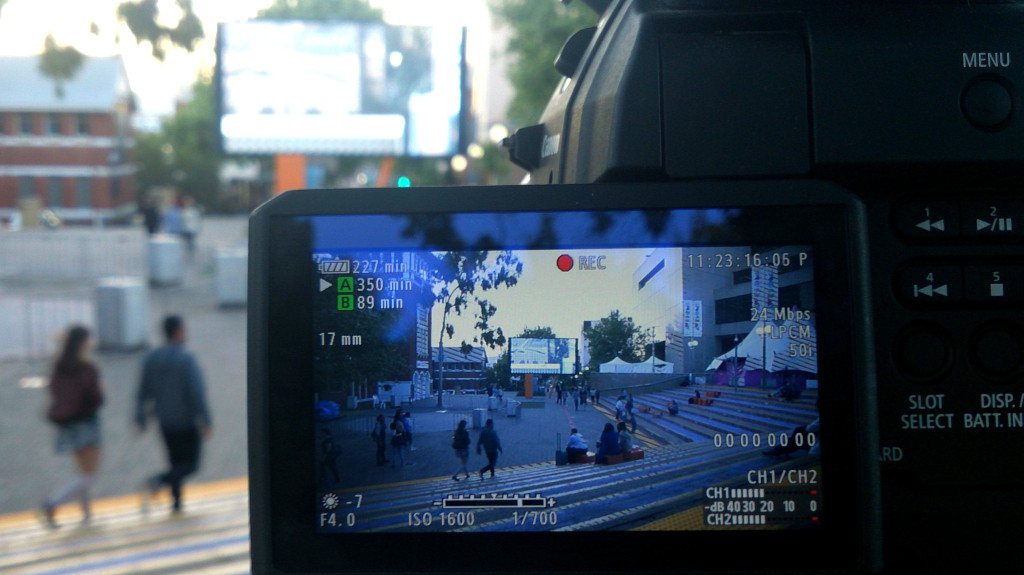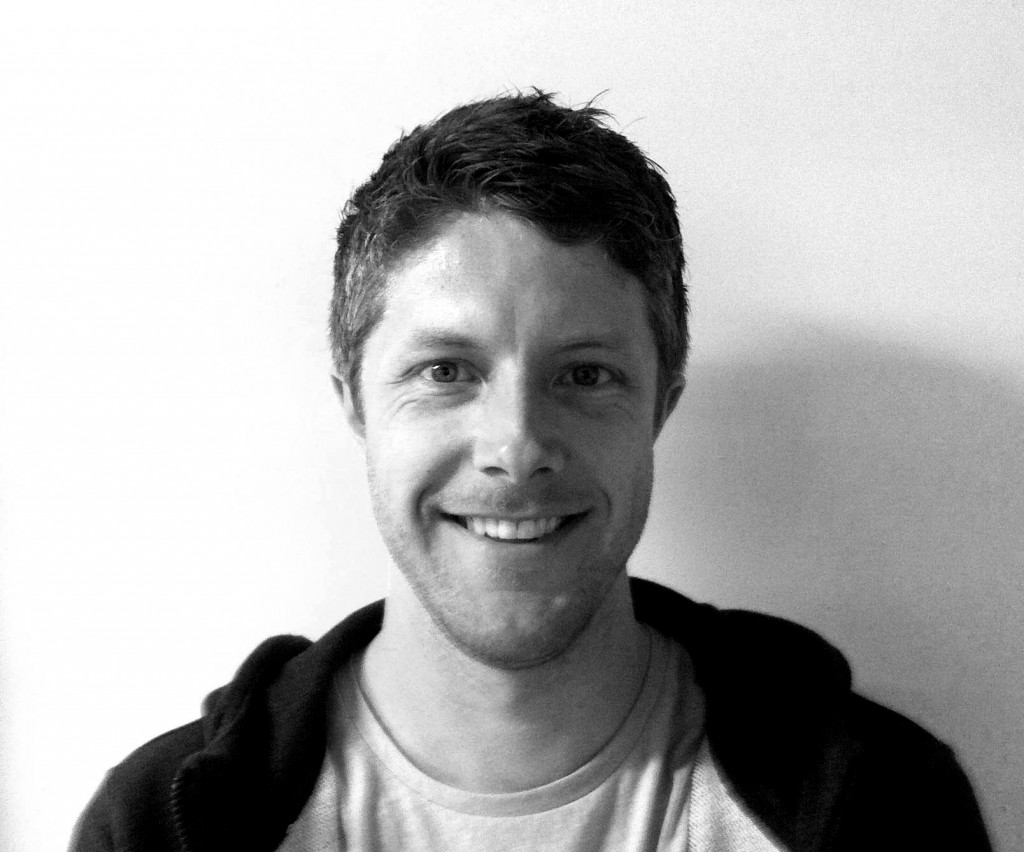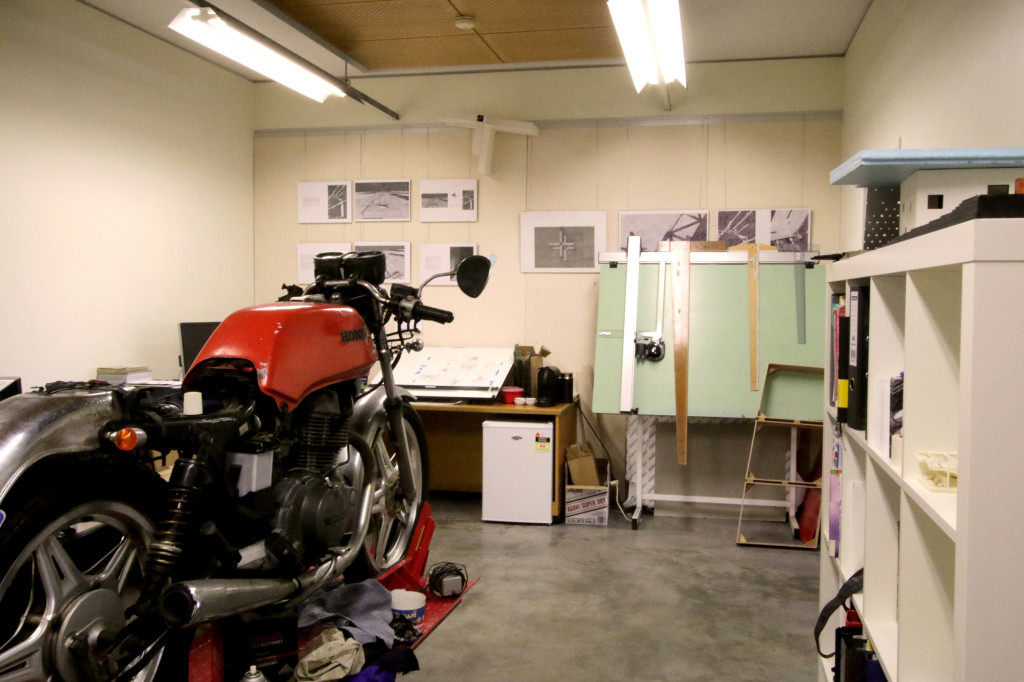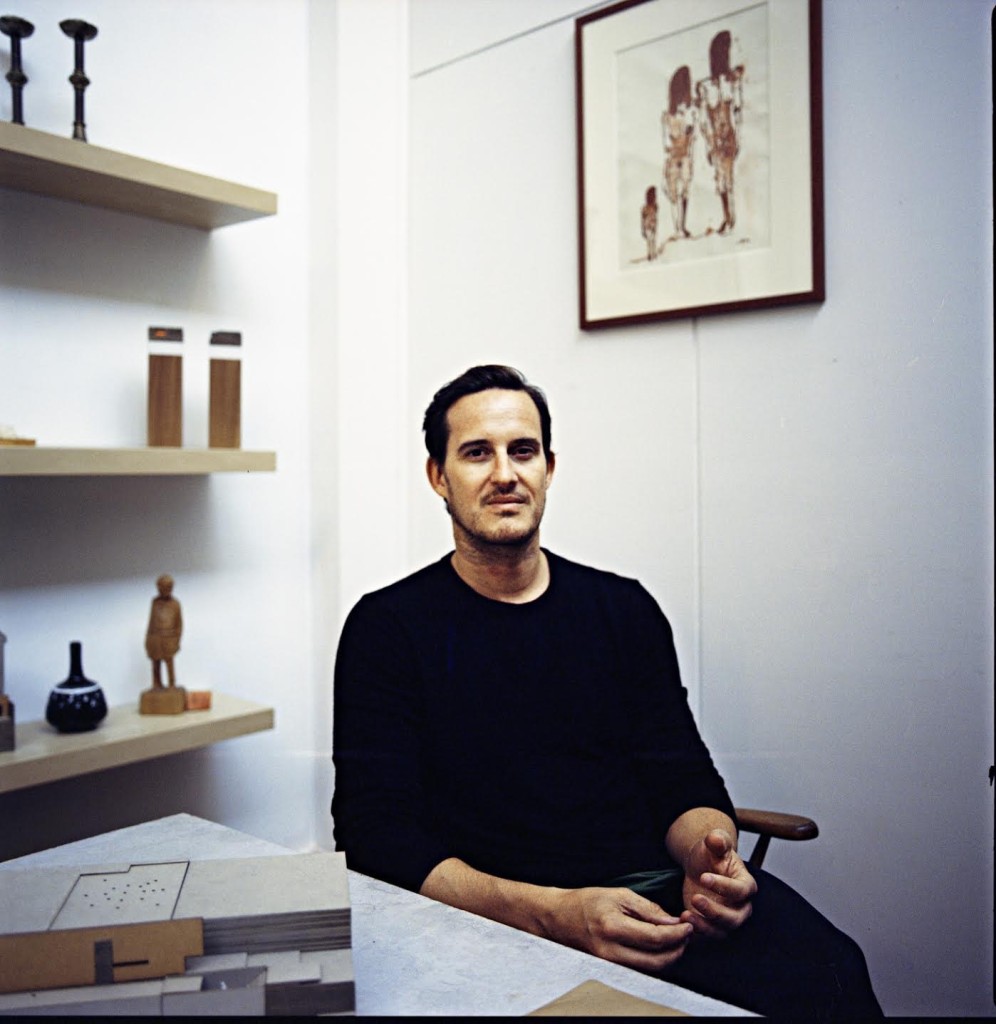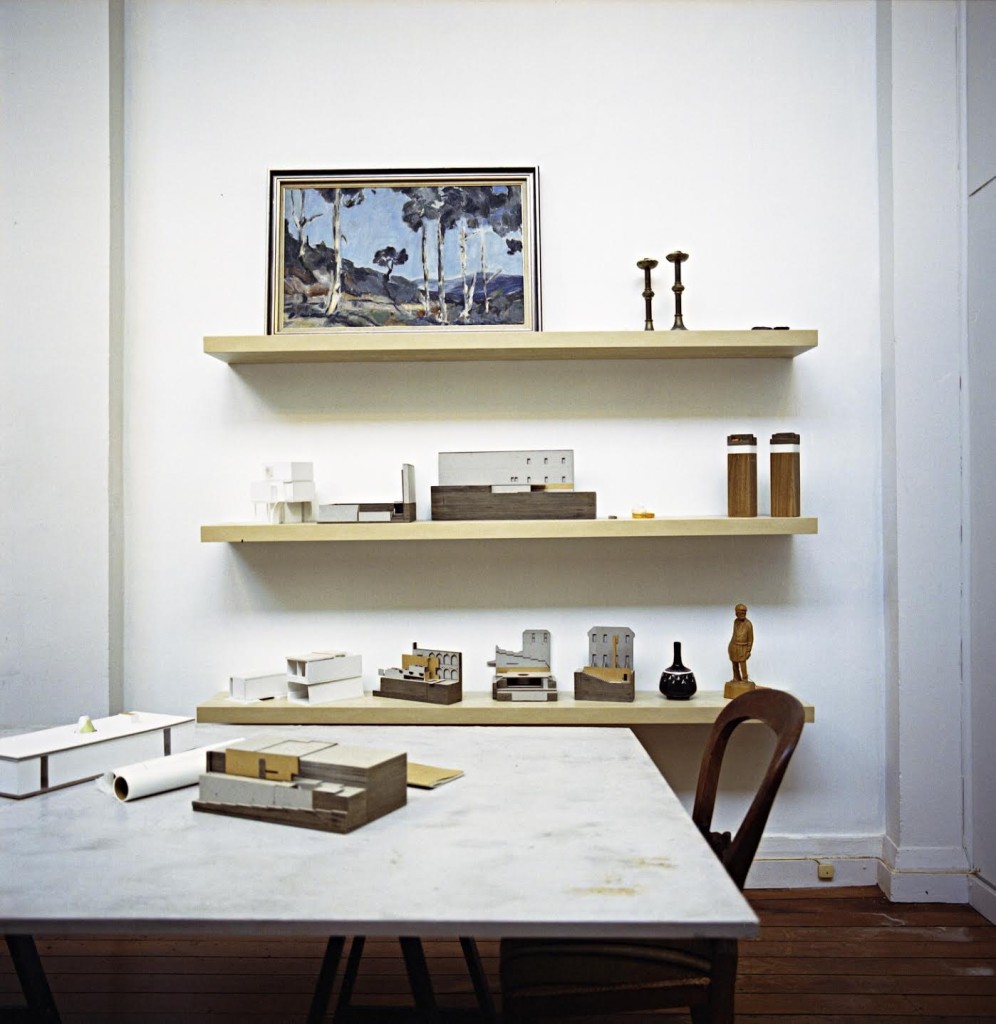
Emerging Conversations: Western Australia
Emerging Conversations: Western Australia
Share
Interviews & Text by Amelyn Ng for the Australian Design Review. Above image: Nic Brunsdon, Photo by Claire Martin.
This series on emerging architecture graduates and professionals presents a diverse cross-section of young talent across Australia. While they don’t necessarily have it all figured out, these highly motivated individuals are featured for their exceptional passion to pursue their interests and create change. Amidst the uncertainties and difficulties commonly faced by those new to the game, a new standard of proactivity is being set through self motivated projects, practices, leadership and civic initiative. By sharing the insights, knowledge and experiences of those a little further ahead, Emerging Conversations aims to demystify the uncertainties surrounding post-architecture school life and establish an accessible, heartening platform for recent graduates and students of architecture. In this pilot article, Amelyn Ng speaks with three individuals making waves in Western Australia.
Mimi Cho – Public Advocacy
Graduated 2011, working at GHD Woodhead in view of registration Chair of the Institute’s Emerging Architects and Graduates Network (EmAGN) WA Chapter, curator of numerous public installations including www.urbanscreening.org
AN: 4 years out from graduation, and you have plenty on: from chairing EmaGN WA to exhibiting work and curating public events such as the Urban Screening [which is playing before us as we speak]. What drives you to go above and beyond the standard commitments of an architecture career (which is often onerous in and of itself)?
MC: I like making things happen and I like finishing what I start. While I develop certain skills through architectural practice, I have found other avenues to develop additional layers of expertise and experience. EmAGN WA (formerly MERGE Emerging Architects) had a strong presence at my university through the Curtin Architecture Student Association, and I was lucky to have friends who were always involved in extra curricular projects. As someone who wanted to be involved in the wider discourse, it was good to know EmAGN WA would be there when I graduated. I took my time treating myself to some travel and getting a job before feeling ready to get involved in EmAGN WA, which has since opened up opportunities for me to work with a myriad of [emerging] talent on creative public projects such as the Urban Screening.
AN: How much has your uni experience contributed to the things you are doing today? For example, your stop-motion film at the ‘Go Away and Come Back’ exhibition in Fremantle.
MC: That exhibition was curated by my 5th year thesis supervisor Robyn Creagh now a friend of mine. Upon graduation she sent me a Facebook request with a message saying, “You’re not my student anymore!” We’ve since stayed in touch, collaborating on a few creative projects… and so the dialogue continues.
AN: So those connections do last! Not many graduates realise how valuable these relationships are. I suppose it’s about looking beyond studio grades and academic references, and cultivating a genuine interest in the work and collaborative knowledge of peers, teachers, colleagues.
MC: That’s right. Robyn’s actually also involved in this year’s Urban Screening!
‘Urban Screening’ at James Street Amphitheatre, Perth Cultural Centre in Northbridge. A public video exhibition that presents the sometimes inaccessible ideas around architecture to the general public, it is in its second year and is now travelling to other cities via the Institute’s Emerging Architects and Graduates Network (EmAGN). Perth 1 – 31 October 2015, Adelaide 9 – 12 October 2015, Brisbane 6 November 2015, Canberra 27 November 2015, Melbourne/Sydney/Hobart TBA.
AN: There are so many different career choices out there postgraduation that it can be intimidating to know where to start. As a new graduate how did you make the next big step forward and know it was the right decision for you?
MC: I too felt this way at the time; nervous about getting a job at the ‘right’ firm. I found myself in a lucky position with two job offers two very different offers! One was at a boutique residential practice of about 6 people, and the other was at a firm on St Georges Terrace with an office in every major capital city in the country. It was one of the toughest decisions of my life. I went with the firm on St Georges Terrace. As a people person I saw more opportunity to establish relationships with mentors and peers at this early stage of my career; some of my best friends today were/are colleagues. I also wanted to travel with work and was looking for work life balance. If I do eventually decide to move to a smaller practice, I hope that option will still be there. At the end of the day I just had to know myself and that’s important. You have to know your personality, what you can handle, what’ll make you happy and what you want out of a job.
Craig McCormack Earlycareer
Academic Graduated 2011 (currently completing PhD in Space Architecture)
PhD candidate at UWA Director at felixlab, cocurator of Australian Pavilion Venice Biennale 2014
AN: From co-curating the Australian Pavilion at last year’s Biennale, to delving into a PhD… What has been the driving force behind your architectural education and early career?
CM: My driving force… Ultimately employment, I suppose? (Laughs.) I’m a career student, as people will tell me often. I studied music in London and arts at Curtin, yet I never really wanted to be a musician nor artist I was simply interested in the subjects. During this time I started seriously considering architecture. But I was always brought up to finish what you started, so I put in a few years to complete the first two degrees.
When I finally entered architecture school, I thought I was going to be designing skyscrapers or dog kennels in Dubai… How quickly that changes! There is indeed a lot of hard work involved. But by then I’d developed the strong Irish workingclass ethic of ‘chipping away at it’, which really helps in architecture. You’re either in it for the long haul or you’re not in it at all. The detrition rate at the end of the undergraduate course was huge but a good ‘get out of jail free’ clause for those less keen to move into another design avenue. For me it was the opposite: in second year it clicked. Once I started to realise what this big, messy melange of design could be, I embraced every aspect of it.
AN: Your work is about space architecture, and delves beyond pragmatics into science fiction, narrative and speculation. What do you think is the value of academia and theory in the architecture sphere? Are there many Australian grads choosing this path?
CM: I think it’s extremely valuable. It’s having the freedom to think beyond the visual sense. There are a few graduates I know who have taken the academic route at UWA. These people aren’t masquerading as historians; they’re just more interested in chasing ideas unencumbered by the weight of history or practice as such.
At university I did my dissertation at the same time as design I didn’t feel it was an overload at all; rather, a balanced approach to study. I designed a space station and used postcards to construct a narrative of an inhabitant sending letters back to earth over 1000 years. This thesis project led into my PhD and now I’m known around here as the ‘space guy’. Some of my colleagues have questioned the validity and value of theory over architecture’s practical aspects. But it’s in paper architecture where one can challenge, critique and make some ballsy statements, uninhibited by the pragmatics of building. One way or another, it always feeds back into design.
AN: Any advice to graduates?
CM: My biggest advice would be to be active and involved with your local architectural community. Architecture is a part of the humanitiesart, music, and so on so get out there and get connected! There are so many events happening in Perth, from Open House to public talks… I would say get involved with all the extracurricular stuff before you leave, so that you have a good idea of what’s out there.
When I got connected into felix via a university colleague, we worked together on Unbuilt Perth , an augmented reality project on local building proposals that didn’t get built, but had fascinating socioeconomic or political stories behind them. When the time came around for expressions of interest in curating the 2014 Venice Biennale Australian Pavilion, we submitted the idea of an Unbuilt Australia and were selected! The Biennale was a fantastic experience and it all started by getting connected.
Nic Brunsdon – Emerging Entrepreneur
Graduated 2004, registered architect running own practice
Founder of PostStudio, CoFounder of Spacemarket
2015 National Emerging Architect Australia
2015 Dulux Study Tour National Prize for Emerging Architects
WA Chapter Councillor RAIA
AN: You have been making waves both locally and nationally through your recent work, and have championed a new model of creative practice. What has been the driving force behind your architectural education and early career?
NB: The frustration of seeing architects pushed to the periphery as a kind of facademaking, decorative role rather than being integral to the realisation of built spaces & projects. A lot of it is our own fault. As architects we are the world’s great generalists and therefore are perfect to sit, lead, dream, direct, enact and procure this stuff. When architecture is done well, it doesn’t prioritise one thing over another; it’s a symphony. I’m driven to resist specialisation, I try to be really broad with my skillset. I even did a business course two years ago so I could sit at that table and engage in those discussions.
AN: What do you think of the role of mentorship in architecture?
NB: Very important. We’ve recently had dealings with larger firms who have treated us terribly and tried to stomp us out of the process. At times like this you wonder, how big is big enough? I remember being told: when you reach a higher level make sure you send the elevator back down to bring the next generation up with you.
Maybe the solution is to create your own job, create your own future, create your own possibilities. That’s why we have Posit, our research arm of 10 to 12 people, predominantly university students who are thinking about what they want to do as they inch toward graduation. The idea was to help them direct their own path by providing space, experience and structure. But they bring their own ideas to the table. We’ve also got Nick, our 65-year-old architect builder and Emma, our business manager in her mid-30s. Our point is that it doesn’t work hierarchically; everyone has something to add, so you’ve got to tap knowledge from everywhere.
AN: Any advice to graduates?
The world will change tomorrow if everyone stopped working for big firms. If everyone could just take 5 years from the day they graduate to really do the thing they’re passionate about, and it might mean having to forgo some money or getting a house straightaway, but I mean really really chase hard the thing that you love, find the area you can add a special skill, or make a difference in a problem you see in the world. This may not be traditional architecture as we know it, but the learning and training you get from an architecture degree make you inherently prepared to tackle anything. That would be my advice.
AN: What is your biggest doubt/fear at this point (if any)?
NB: That’s really good I don’t know. Haven’t thought about it, because if I did I might not do anything. I’m an endless optimist. Failure is feedback. So the worst that can happen is you get feedback. So set out to fail. What’s the worst that could happen? You fail, you learn, you go again.


